Audi e-tron GT RS to join standard GT – new details of Audi’s flagship EV revealed
The Audi e-tron GT and e-tron GT RS will be revealed simultaneously next year to rival the Porsche Taycan Turbo
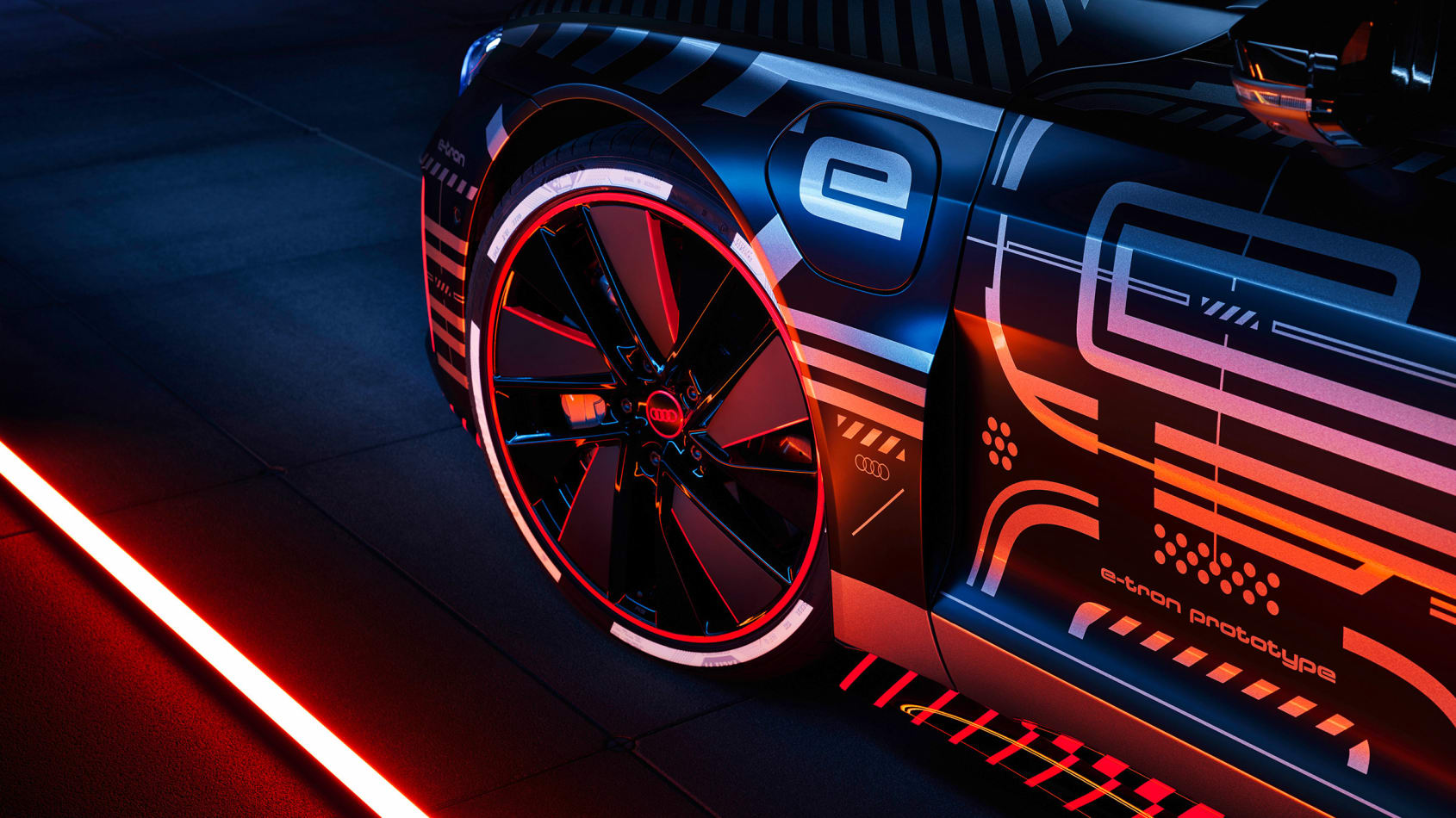 The eTron GT's wheels are narrow in width and are rated for the higher weight of electric batteries
The eTron GT's wheels are narrow in width and are rated for the higher weight of electric batteriesAudi’s e-tron GT has been in a slow progression to production since its reveal in thinly veiled concept form in 2018, but as the model creeps towards its Covid-delayed unveiling in early 2021, Audi has let more info slip about what to expect when that time does eventually arrive.
First, there will be a two-pronged approach to the new e-tron GT’s reveal, with both ‘standard’ and e-tron GT RS models due to be shown off simultaneously in a similar fashion to Porsche’s Taycan Turbo and Turbo S. As has already been established, the two will share more than just a launch strategy with the Taycan, as underneath the two cars are very similar, sharing a fundamental J1 platform and basic proportion set.
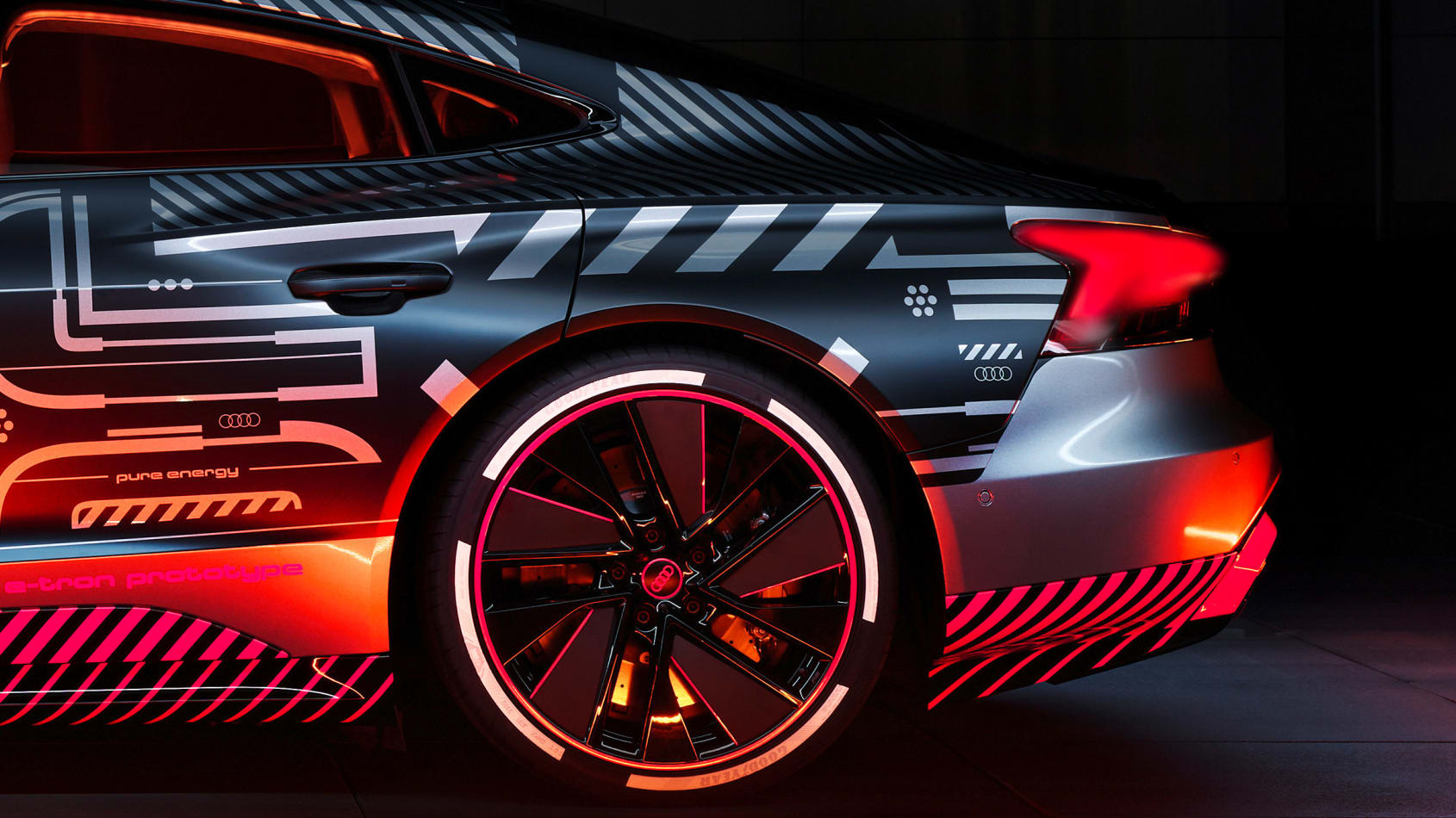 Sharply raked C-pillar prioritises aerodynamics and style over rear-seat comfort
Sharply raked C-pillar prioritises aerodynamics and style over rear-seat comfortThe e-tron GT body itself will be carried across wholesale from the concept, which at the time was confirmed to be production-specification. As a result, the package hasn’t changed, the similar dimensions to the Taycan slipping it between the A5 and A7 Sportbacks in terms of size. Interior space, however, is marginally lesser than the existing Audi 4-door coupes, as this electric flagship has prioritised a sleek, low-slung and heavily tapered cabin in favour of sheer interior volume.
While specifics about the powertrain are still under wraps, 2018’s concept does shed some light on what’s hiding under the low-slug bodywork. The concept is powered by two synchronous electric motors, one for each axle, thereby making it four-wheel drive, a new type of Quattro, if you will. It produced a peak power of 582bhp, a big chunk down on the Taycan Turbo S’ 751bhp overboost figure, which enabled a 0-100kmph time of 3.5sec and a top speed limited to 240kmph. This figure is likely to be built upon for the high-end production variants, with the e-tron RS expected to get much closer to the Turbo S’s figures.
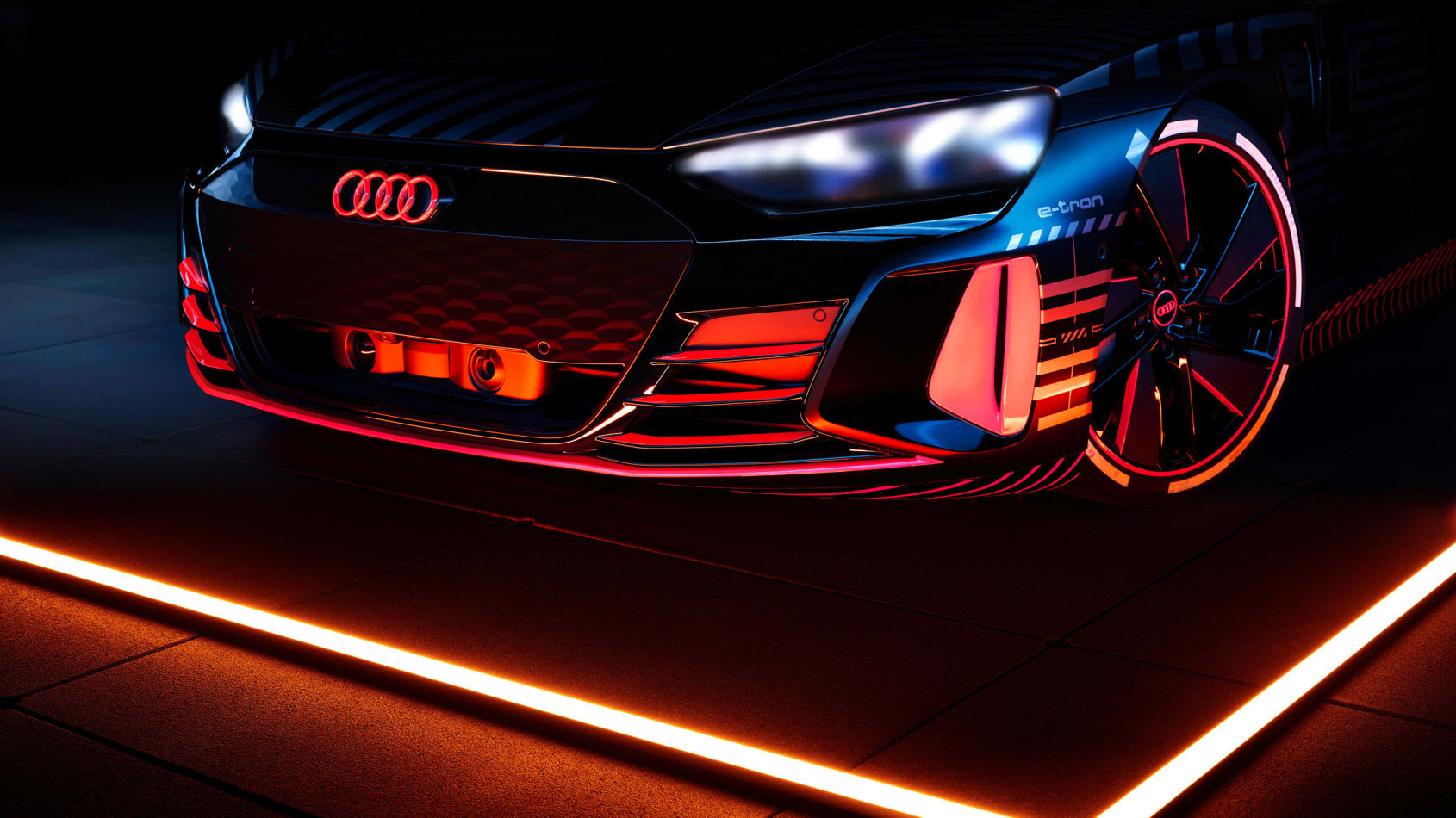 Visible grille elements belie the e-Tron GT's EV credentials
Visible grille elements belie the e-Tron GT's EV credentialsThe car is being developed by Audi Sport, and an engineer told evo that, just like Porsche, it was ‘focusing on the reproducibility of performance’ – something high-performance EVs have struggled with in the past. With double wishbone suspension, electric torque vectoring, rear-wheel steering and a very low centre of gravity (especially for a four-seater), the GT should handle as well as the Porsche Taycan it’s based on.
Another aspect Audi is keen to reinforce is substantial progress in combating range anxiety: the e-tron GT will have a range of nearly 400km from its 90kWh battery pack, the minimum range the firm believes is acceptable to its customers. Moreover, if you can find a charging point compatible with its 800v charging system it’s possible to reach 80 per cent charge (320km) in around 20 minutes. There will also be a wireless charging setup that works with an inductive pad installed in an owner’s garage.
The design consolidates Audi’s current design direction, taking classic motifs like the single-frame grille and literally turning it inside out. This is achieved by contrasting a body-coloured finish within the grille and framing it in a black ‘mask’ encompassing both lighting and the minimised cooling intakes. There’s a pair of air curtains at the outer edges of the bumper too, which like on the Taycan will clean the air across the front wheel arches with any high-pressure air inside the arch exiting via a slip vent below the charging port.
Audi’s head of design, Marc Lichte, calls the GT “The highlight of my career”, and has worked hard with his team to subtly make the transition away from a mindset of cars powered by internal combustion engines. The bonnet is plain and ever-so-slightly sunken, alluding to the lack of an engine in there, while the sills are pronounced, as that’s the location of the power source.
The curvaceous body also takes an obvious lead from the Taycan’s packaging, with big over-accentuated body lines slicing through the surfaces, Naturally, at the rear there is no space, nor a need for an exhaust outlet, although there is a working diffuser and a moveable rear spoiler.
The e-tron GT’s shared bones with the Taycan are clear inside the cabin too, with a similar driving position and layout. Where the Taycan’s cabin is clean and uncluttered, the e-tron GT is a far more complex affair, with a variety of different materials and shapes that echo other Audis in the range. The main feeling is one of a more encased environment than the Porsche, with the dash-top and door cards taking up more physical space around the beltline making you feel more ensconced in comparison to the open and airy Porsche.
As with all electric cars, the sound emitted from the e-tron is a product of both design and regulation. As standard, the e-tron GT will create the required exterior sounds, but alongside this system will be an optional Sound Package, which uses the mechanical noises of the electric motors and dedicated speakers mounted in the nose, tail and interior to give the car a completely unique sound profile.
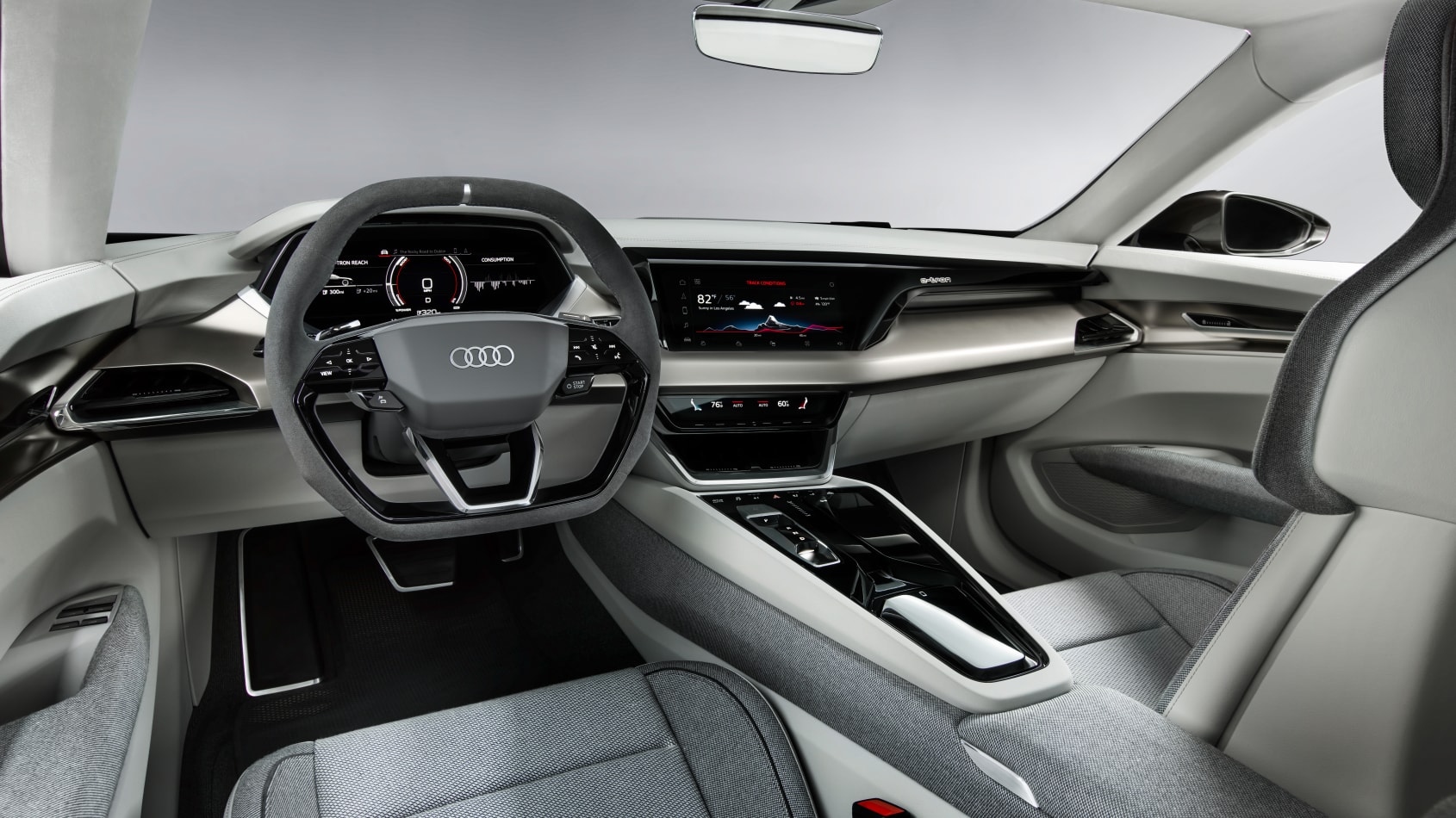 The e-tron GT's interior features everyday usability, and eschews all animal-based materials
The e-tron GT's interior features everyday usability, and eschews all animal-based materialsUnlike the Taycan, the e-tron GT will make a unique sound when static, sounding like something between a sci-fi energy powerstation and alien spacecraft. While it may sound gimmicky, it’s actually quite good fun, and will impress plenty in the pub car park, especially after dark when the e-tron GT’s complex LED lighting is on show.
Whether the Audi pair drive as well as their Porsche cousins remains to be seen, but after a brief go in the passenger seat it feels like Audi might still have some work to do. It’s not to undermine the e-tron GT’s progress, but with a marque like Porsche making a very good first stab at a sporting EV with a platform it’s largely developed, it seems an odd move for Audi to reply with something that seems to be trying to take a bite from the same apple.
Driving the 2018 e-tron GT Concept. In LA. In rush hour…
I’m not going to try and convince you this was a proper drive, because 20 minutes behind a photographer’s tracking car driving through LA at about 50kmph (on the clear bits) is possibly the least relevant test of a car imaginable. So, away from the bright lights of a motor show stand Audi’s e-tron GT looks a million dollars (five-million in fact) kerbside in the dawn sun of a Friday morning in LA. It might be 18 months away from production but it looks ready to the commuters stopping to point an iPhone at it and the Tesla Model X driver who stops and shouts across several lanes of traffic that he wants to buy one now.
 The e-Tron GT hardly stands out in traffic, till it soundlessly passes you by
The e-Tron GT hardly stands out in traffic, till it soundlessly passes you byLichte’s design for the e-tron GT might look a little conservative for a car that is meant to lead Audi into the future, but customers apparently want a steady evolution rather than a quantum leap when it comes to how their electric cars look. They still need to look like an Audi, which is why the e-tron SUV production car looks very much like a facelifted Q5.
Press the tiny LED light at the bottom of the B-pillar and the door pops open and inside the next generation of Audi interior is as you’d expect it: solid, quality focused and considered rather than revolutionary. Overall this prototype is 95 per cent finished, but the interior is said to be 98 per cent there and is only a production sign off away from completion.
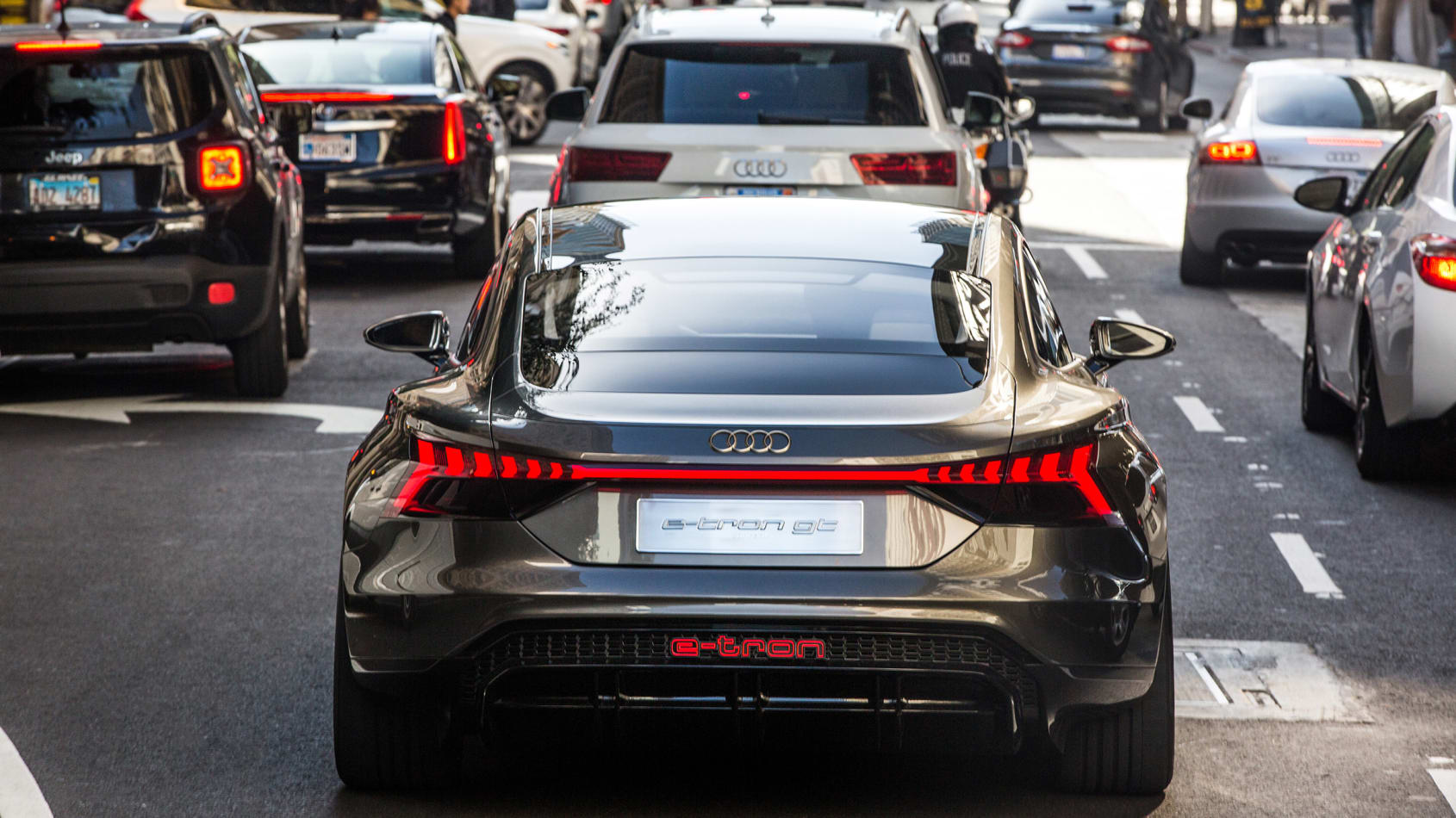 With the adoption of more and more EVs, the traffic jams of the future won't have the heat haze from exhaust gases
With the adoption of more and more EVs, the traffic jams of the future won't have the heat haze from exhaust gasesFrom 0-50kmph there’s a Tron-like soundtrack to the powertrain and that’s about it for what I can tell you about how it feels like to drive. With a 50kmph speed limit, imposed by both the Audi engineer sat alongside and the LAPD riding along with us, there is little else credible that I can tell you. The re-gen brake setup did feel good, certainly less grabby and like pushing a concrete slab than many current systems.
With a suspension setup for the motor show stand rather than Downtown LA it did ride like the multi-link air-suspension that will be fitted to all e-tron GT production models had been replaced with a mix of aggregates and other building materials found in the construction isle of the nearest Home Depot store. Or like an early A4 S Line.
The earliest we expect the e-Tron GT in India is sometime in 2022. But before that happens, there will be quite a other EVs waiting in the wings, like the Porsche Taycan (which was initially slated for launch by the end of 2020, before Covid played spoilsport) and the Vokswagen ID.4 (slated for an end 2021 or start of '22 launch). There has even been chatter of Tesla setting up India operations, courtesy remarks from none other than the brand's CEO and founder Elon Musk. Currently, though, the only luxury EV on sale in the country is the Mercedes-Benz EQC.


